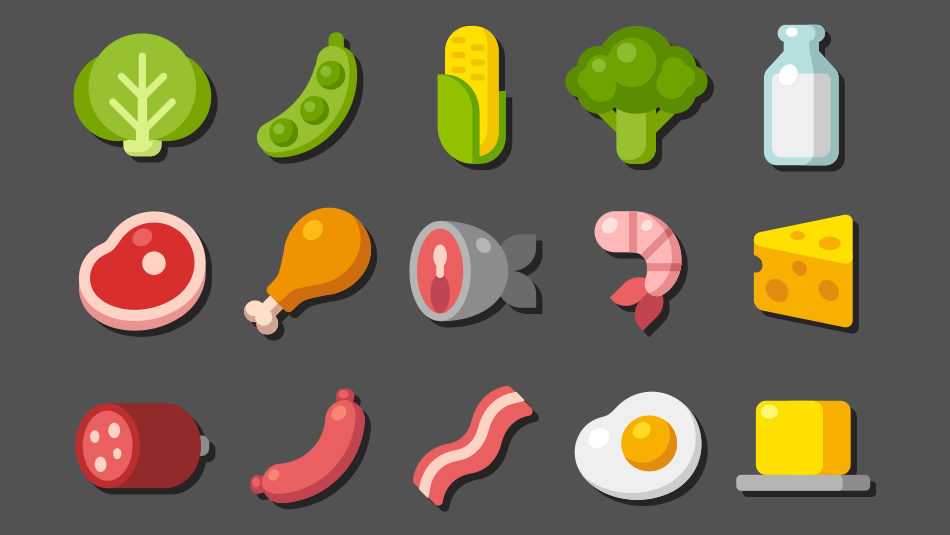
Why We Should Eliminate All Food Commodity Marketing Boards
I have a confession to make. I hate food commodity marketing boards.
You may find my opinion surprising, given that my firm has enjoyed a great track record of helping food commodity marketing boards accomplish their goals for over thirty years.
I’ll explain my reasoning in a minute. But first, we need a shared understanding of exactly what constitutes a food commodity marketing board. And that explanation starts with a brief recap of one pivotal period in the history of agricultural marketing.
How the U.S. Government Transformed Agricultural Marketing
In the 1930s, farming in America was still very much a family business – highly fragmented and dominated by small farms. Given their modest size, it’s not surprising that these family farms lacked the financial wherewithal to be effective marketers of their goods on a national level.
In an effort to help family farms become more prosperous, the United States Government (and in many cases, state governments) decided to organize farmers into marketing groups based on the specific items they grew or ranched. With the support of the AG industry, several food commodity marketing boards were legislated into existence, which included a requirement that all farmers growing a particular produce item be assessed a fee, based on the amount of that item that the individual farmer actually produced. So the more a farmer grew, the more he or she would pay in assessments.
These funds were then pooled with the money from all other growers of the same item, and voilà: a national marketing fund was born. Individual farmers now had a national voice that could spread the good news about their product, build consumption across America and (hopefully) create a more prosperous future for the farmers.
So far, so good.
But in my opinion, things got a bit murky once the government started using the moniker “Food Commodity Marketing Board” as the standard description for these newly created entities. As we frequently hear these days, “Words matter.” And in the case of these marketing groups, I believe this nomenclature has inadvertently led to benign work that frequently falls well short of the original intent.
As the Saying Goes, “Words Matter.”
It all has to do with that one, nasty word: “commodity.”
A common definition of the word “commodity” is, “A basic good that’s interchangeable with others of the same type.”
Accepting this definition also means you are accepting the following:
- Your product is not unique in any way.
- Your product has no meaningful distinguishing characteristics.
- Your product adds nothing to the value equation.
- Your product is destined to always be a victim of market dynamics beyond your control.
- You must rely exclusively on price incentives as a tool to stimulate sales.
What food marketer in his or her right mind wants to live in that world? Not me. And I’m guessing not you, either.
Emulate CPG Brands for Commodity Board Marketing Success
Don’t despair, there is hope for a better future. A future that you can define, manage and grow into a distinctive and compelling marketplace positioning.
It’s as simple as bringing a CPG mindset to your organization’s marketing discipline. This starts by identifying and manifesting a distinctive brand positioning that is based on tangible or intangible competitive attributes.
So how do you bring these CPG marketing approaches to the world of AG? Opportunities abound.
One potential technique is to focus on your growing region, which can be a powerful tool to create a distinctive personality and superior positioning that consumers will remember and embrace.
For example, ask yourself which of the following sounds like a more desirable, higher quality product:
- Potatoes, or Idaho Potatoes?
- Walnuts, or California Walnuts?
- Oranges, or Florida Oranges?
- Cheese, or Wisconsin Cheese?
- Onions, or Vidalia Onions?
In each case, adding a growing region conjures up positive imagery and creates a halo effect that elevates brand quality perceptions. And pays off at the cash register.
Your brand differentiation can also be the direct result of the personality and values that you convey in your marketing. This approach relies more on intangible perceived (but equally powerful) benefits rather than tangible product attributes.
For example, in a blind test, how many consumers could discern a taste difference between any two of the leading bottled water brands? Yet some brands dominate the bottled water market, while others languish far behind. A great deal of that market domination is derived from smart marketing platforms that establish a powerful image for the brand.
One last case in point: The Wonderful Company has done an outstanding job of applying CPG marketing rigor to what might otherwise be seen as just one more non-differentiated food commodity. Removed from their packaging, many mandarins would look (and perform) pretty much the same. But Wonderful Company’s Halo brand of mandarins stands out from all others and occupies a special place in the hearts and minds of many consumers. This is largely due to the consistent and effective positioning that Wonderful puts behind the brand. The same is true for Wonderful Pistachios as well as other products in the Wonderful portfolio.
Don’t Commoditize Your Product. Behave Like a Brand.
Every product faces competition. Whenever a consumer chooses your product, he or she is also deciding to NOT buy another product that they consider to be a viable alternative. So just telling the world that you exist is not enough. You must convince consumers why they should choose you instead of your competition.
Find your distinctive proposition. Test and verify that you’ve got a winner. Then relentlessly communicate your distinctive positioning through all of the channels at your disposal: consumer adverting, PR, social media, packaging, retail promotions, food service, etc.
Do yourself a favor and help eliminate “commodity thinking” in commodity boards. Behave like a brand. Find your distinctive personality and brand values. Then go win in the marketplace.






